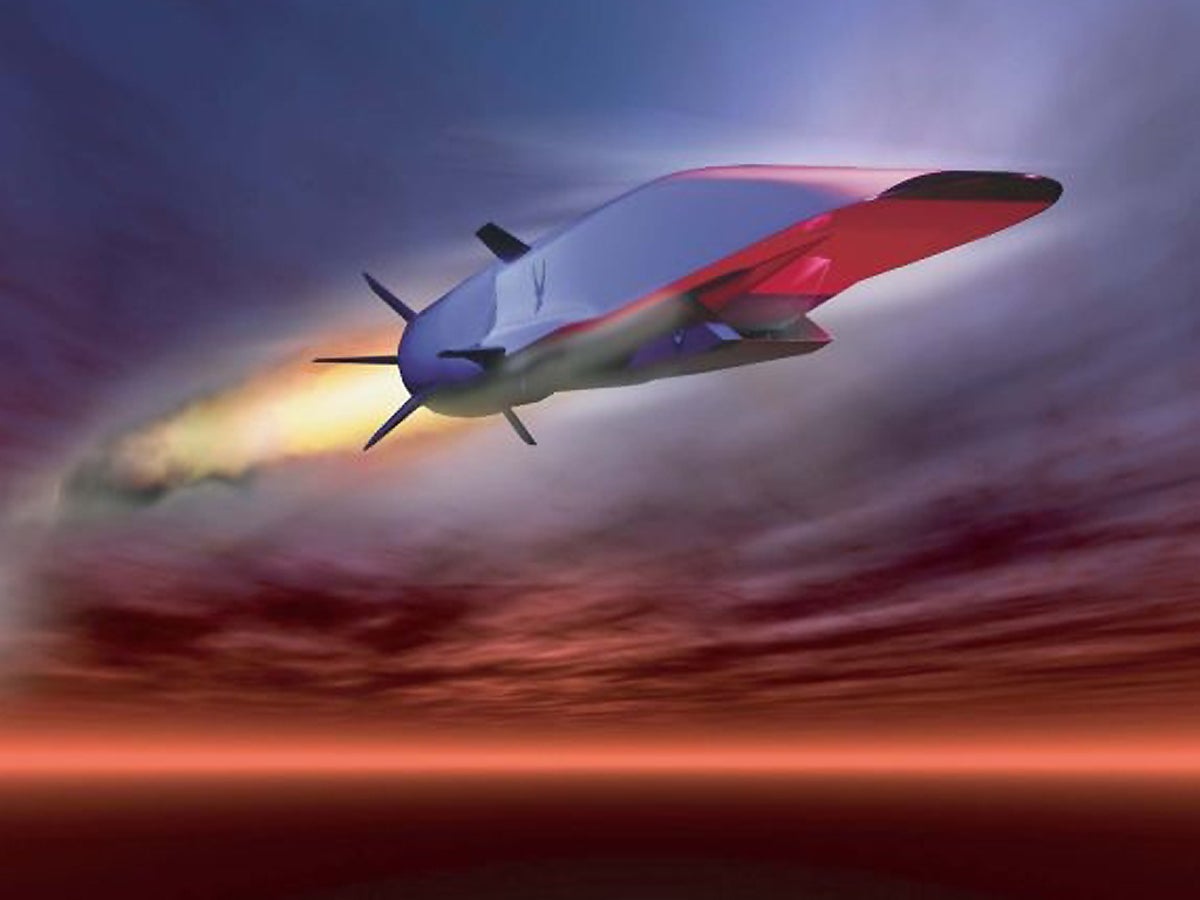Mach 6 Mph - Sign up to our Evening Headlines email for your daily guide to the latest news Sign up to our free US Evening Headlines email
A major test of an experimental aircraft designed to fly at six times the speed of sound, or about 3,600 miles per hour (5,800 km/h), is underway in the United States. The Air Force plans
Mach 6 Mph

The unmanned X-51 WaveRider was expected to reach Mach 6 after dropping off a B-52 bomber and flying off the coast of Southern California near Point Mugu.
Popular Science Secret Mach 6 Spy Plane; Minivans Compared 3 1993
Engineers expected the X-51 to maintain its top speed for five minutes, twice as long as before.
The B-52 took off, but no other information about the test flight was available, John Haar, a spokesman for Edwards Air Force Base in California, said in an email.
Last year, in its most recent test, the X-51 fell to the ground for about four seconds before its booster rocket ignited, but the plane was unable to separate from the rocket and plunged into the ocean.
Designed by Boeing, the plane was intended to allow the Pentagon to launch attacks around the world in minutes.
Hermeus: Hypersonic Aircraft Designed To Fly From Nyc To London In 90 Minutes
Want to bookmark your favorite articles and stories to read or refer to later? Start your premium subscription today.
Best Apple iPhone deals in the UK January 2023 Compare iPhone contract deals and get the best deal this January
Please refresh the page or navigate to another page on the site Refresh your browser to log in automatically Lockheed's 'Son of Blackbird' spy plane may already be here, but it's cruising at Mach 6 unmanned.

The Lockheed Martin SR-71 Blackbird is one of the most recognizable aircraft designs in history. Few other aircraft have captured the public's attention and imagination the way the SR-71 did in 1990 (almost 30 years after entering service). Although we are now two decades past Blackbird's retirement, America's need for supersonic, high-altitude surveillance has not diminished.
Get Ready For The Era Of Hypersonic Flight — At Five Times The Speed Of Sound
That's why Lockheed's secret Skunk Works team has been developing the SR-72 since 2007, dubbed "Son of the Blackbird." This next-generation spy plane will reportedly surpass its predecessor in almost every way. Rumored to be powered by an air-breathing scramjet engine, the SR-72 would be capable of exceeding Mach 6 (4,000MPH), giving the hypersonic aircraft the ability to fly through enemy air defenses before anyone knew it was there.
But preparing a design proposal and building a drone that can break the sound barrier six times are two entirely different animals. That's why the SR-72 isn't expected to enter the prototype phase until 2030 (although Lockheed Vice President Jack O'Banion recently indicated that already).
Although the US Air Force has been toying with the technology since the 1960s, hypersonic aircraft and the scramjets that propel them are the lifeblood of aerospace engineering. The reason for this is the severe difficulty in developing them. Bobby Brown said.
"There are a number of technical challenges when it comes to a hypersonic system that is supposed to carry a significant load," he explained. "In fact, it's usually three different domains -- aerothermodynamics, structures and propulsion -- that make developing a hypersonic vehicle such a challenge."
Ford Mustang Coupe
Hypersonic vehicles must maintain their shape in order to achieve tighter aerodynamic characteristics than that seen when the surface of the aircraft is heated to thousands of degrees Fahrenheit due to air friction.
Brown points out that aircraft designed for subsonic flight (such as the Boeing 737) have very different propulsion requirements than supersonic fighter jets and hypersonic spy planes.
"These systems, they're all designed to fly well in their domain of interest," Brown said. However, a hypersonic vehicle must be able to fly at all three speeds. "That means you're compromising sub-sonic and supersonic flight, which compromises the performance of the vehicle, or you're changing the propulsion system...

Of course building and testing such an aviation system presents entirely different challenges. "A hypersonic system is relatively expensive to build and operate," Brown said. "It's relatively unforgiving of mistakes, because any time you go fast, a small discrepancy spreads very quickly." As a UAV, the SR-72's unmanned nature improves that risk somewhat, but does not completely eliminate the risk of a crash. "There's some risk associated with that, but in that sense it's no different than any other space system," Brown concluded. "There's always a risk."
The Real Story Of Darkstar In 'top Gun: Maverick'
That's where computer modeling comes in. "Computer modeling is incredibly important for this type of work," Brown said. "A hypersonic vehicle is going to fly at high speeds at high altitudes, and in doing so, you're in a different situation than if you were to take in sea-level air and accelerate it to the same speed."
Digitally simulating those conditions is currently the most practical way to test ultrasonic designs, and is less expensive than building prototypes and hoping they don't explode during testing. "Our computer models are so complex and so capable," Brown continued, "that we can design and optimize the computer's entire system before the computer is built."
The US Air Force will be the primary beneficiary of Skunkwork's efforts, and Brown expects the technology to trickle down to civilian applications soon. Imagine being able to fly to anywhere else on Earth within 90 minutes from wherever you are now. That's what hypersonic travel promises.
"Hypersonic isn't just about building a fun vehicle, putting a load on it and taking that load somewhere fast," Brown said. "Hypersonic, to me, is a very big domain, and it affects everything from military supply and surveillance to the rapid delivery of cargo from one place to another, to entering or returning from space."
The 2023 Ford Mustang Mach E: The All Electric Compact Suv Is Fast And Thrilling
All recommended products are selected by our editorial team, independent of our parent company. Some of our stories include affiliate links. If you make a purchase through one of these links, we may earn an affiliate commission. All prices correct at time of publication. The X-15 may not be as famous as other super aircraft like the F-35 or F-22. However, it made aviation history as a speed demon: In 1967, William "Pete" Knight made history on the stick of his North American X-15A-2 rocket-powered airplane when he reached speeds of about Mach 6.7 or 5 . At a speed of 140 miles per hour, at an altitude of 102,000 feet. Although this particular flight was one for the record books, it was no slouch. Over the course of nine years, 12 pilots took the helm of the X-15 and made a total of 199 flights, 13 of which even met Air Force standards for spaceflight, and eight pilots earned their space wings.
A total of three X-15s were built, and although they were hypersonic aircraft, they were far from operational platforms. To achieve such incredible speeds, the X-15 relied on a liquid-propellant rocket engine that burned for only 80 to 120 seconds. But in that short time,
. The X-15's XLR99 rocket engine produces 600,000 horsepower and 70,400 pounds of thrust, or about 2/3 the thrust of Blue Origin's New Shepard rocket to send it into orbit.

To make the most of that short burn, the X-15 was loaded under the wing of a B-52 Stratofortress and dropped at 500 mph, hitting the throttle and depositing fuel in the idling rocket engine. .
Sega Universe: Blaze Running Speed By Frostthehobidon On Deviantart
In aerodynamic flight, the X-15 used conventional aerodynamic control, with rudder surfaces on the vertical stabilizers to control yaw (or left-to-right movement of the nose) and horizontal surfaces of the tail (aiming the nose) to control pitch. . top and bottom). However, once the X-15 leaves the atmosphere, it switches to its nose-up approach using hydrogen peroxide thrusters in the aircraft's nose and wings.
The fallout was far reaching in many critical areas. . . The existence of the X-15 encouraged widespread use of relatively exotic alloys such as titanium and Inconel-X, leading to machining and manufacturing techniques that became standard in the aerospace industry.
The possibility of accidental loss of pressure led to the development of the first practical full pressure suit for pilot protection in space. The X-15 was the first to use reaction controls for attitude control in space; The space program contributed re-entry techniques and related technologies, and the X-15 even conducted geological investigations on some of its flights.
On October 24, 1968, NASA's William H. Dana ended the last X-15 flight after touching the bottom of a dry lake at 200 mph. In just nine years, the
Lockheed Martin's Sr 72 Mach 6 Darkstar: What We Know
Sig p365 tulster holster, sig p365 iwb holster, sig holsters p365, sig p365 sas holster, sig p365 xl holster, sig p365 hybrid holster, appendix holster sig p365, safariland holster sig p365, sig p365 belt holster, sig p365 holster, sig p365 purse holster, sig sauer p365 holster
0 Comments